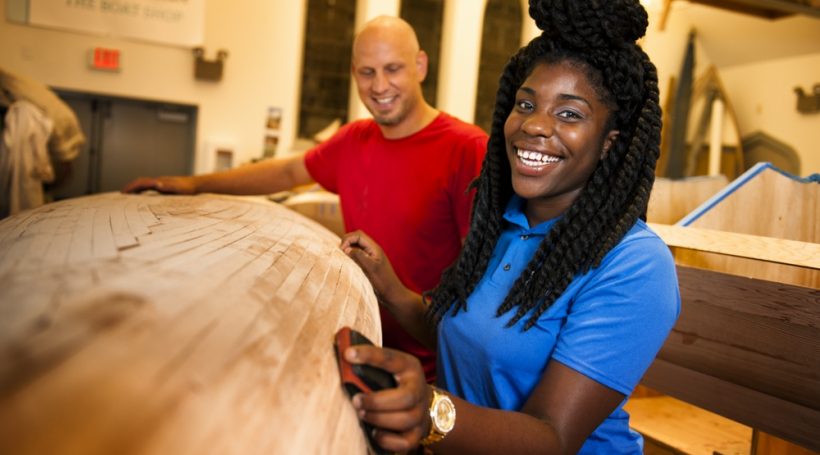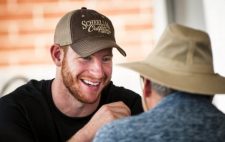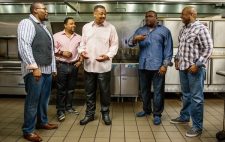On any afternoon during the school year, you’ll find a small group of teens – each wearing a tool belt with a staple gun or sander in hand – gathered on the expansive, dusty first floor of an old Camden church. The next hours will be filled with talking, sweating, listening, learning, planning and building. The finished product? Self-confidence, personal growth and, oh yes, a beautiful boat.
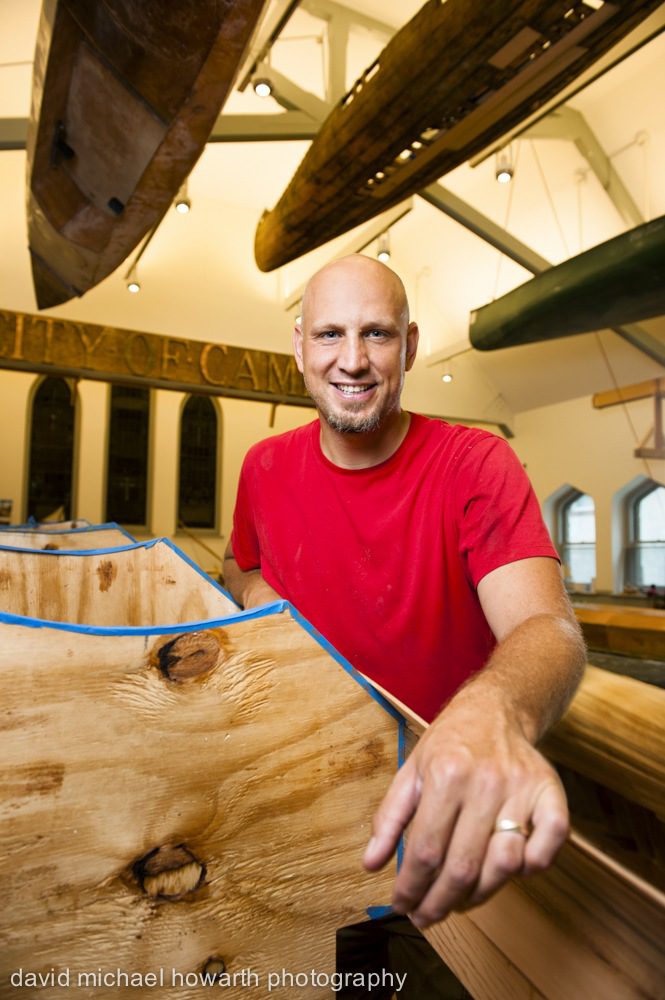
Jeff VanderKuip
“What we do is primarily about building a relationship with the students. We just happen to do it while being distracted building boats,” says Jeff VanderKuip, 41. The energetic VanderKuip is program director of BoatWorks, an UrbanPromise program where small teams of middle and high school students – called “cohorts” – spend around 60 hours with adult volunteers building a boat, one hammer and nail at a time.
The program began in 2009 with five teens and a handful of volunteers, but has since expanded to include 50 students each year. That first group built three skiffs, named Faith, Promise and Grace. In the seven years since, BoatWorks participants have finished more than 40 watercraft, including canoes, kayaks, sailboats, skiffs and even a dragon boat. (They are now working on a second dragon boat, because, as VanderKuip points out, “Racing is much more fun when you have two boats.”)
The boat shop is housed in two stories of the former Church of Our Savior, a building with its own place in Camden’s history. The original parish hall was built in 1892 using stones from Greenland brought on the return voyage of Matthew Henson, the first African-American to explore the Arctic and a member of the first group to reach the North Pole. A statue of Henson and his dog stands out front, just off the street.
Inside, light pours in the large windows, filtering through sawdust to illuminate boats at various stages of completion. Some are propped on sawhorses; some hang from the ceiling. Oversized wooden letters spell out “City of Camden” across a ceiling beam.
VanderKuip says the reaction of students entering the shop for the first time is typically one of wide-eyed amazement, followed rapidly by skepticism.
“You get the wide eyes,” he says.
“Often, the students are new to me, and I’m new to them so they tend to be a little standoffish at first. You don’t get a lot of loud expressions or excitement. You hear phrases like, ‘Well, I’m not going to use it.’ I ignore that, because I know by the time we’re done I’m going to be so proud, and they’re going to be so proud of what they’ve built, they’re going to be excited to use everything here.”
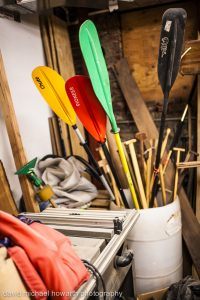 Each cohort, which consists of between five and eight students, visits the boat shop for approximately two hours one day a week to work on their boat. VanderKuip says after the first few weeks, the skepticism fades and the kids are just eager to move from one step to the next.
Each cohort, which consists of between five and eight students, visits the boat shop for approximately two hours one day a week to work on their boat. VanderKuip says after the first few weeks, the skepticism fades and the kids are just eager to move from one step to the next.
“They get into it. They come in and they’re ready to go, geared up and focused on trying to accomplish the task of the day,” VanderKuip says. “They’re here for one afternoon a week for 30 weeks, and by the time those 30 weeks are up they’ve begun and finished an entire boat.”
VanderKuip teaches the students how to handle power tools; they do all the cutting, adhering and sanding themselves. While he is strict about safety and awareness when it comes to power tools, he also takes a relatively free-range approach to the type of hands-on learning he oversees in the boat shop.
“I’ll give them something and say, ‘Here, you’re going to use this tool,’” he says. “I look at them almost like, ‘Yeah, you’ve got it.’ I want them to feel the responsibility that I’ve just handed them this tool and then walked away. They look at me like I’m crazy, but I learned that way too. You’re probably going to mess up multiple times, but it’s important to have the freedom to mess up. There’s always some level of possibility to make changes and fix things as we go along.”
“I think a student’s mind is malleable,” he continues. “The fancy term for it is ‘experiential learning.’ What we’re doing here is all about that. The more you get to touch, feel, make, do and think through, the more you’re going to get out of this experience.”
While most of the building happens during the school year, this summer BoatWorks employed five students as River Guides. In addition to refurbishing and maintaining the fleet of more than two dozen boats, the teens underwent training on the history and ecology of the Cooper River. All summer long, they led two-hour paddling trips, piloting clients down the river and acting as tour guides.
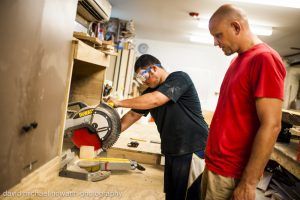 VanderKuip says the River Guide position is an opportunity for the young people to learn the fundamentals of employment before they enter the workforce or head to college.
VanderKuip says the River Guide position is an opportunity for the young people to learn the fundamentals of employment before they enter the workforce or head to college.
“It’s a legitimate job, and they’re being paid a wage,” he says. “A huge portion of it is customer service, interacting with people, carrying yourself with professionalism. Those are all things that are vital to learn.”
One of this summer’s River Guides is Derjanai Thomas, who is 19 and heads to University of Maryland this fall. Thomas grew up in Camden and joined BoatWorks during her freshman year in high school. She remembers the skepticism she felt during her first days in the boat shop, but now says she feels totally at home.
“My freshman year I was nervous, like, ‘Is this thing going to float?’” she says. “But this is the kind of thing where you shouldn’t say no until you try it.”
VanderKuip realizes that for some students who come through the boat shop, his steady presence is significant. For some, he is more than just a teacher. VanderKuip takes care to treat his students like adults; mutual respect is a large part of what he works to achieve with each group.
“In some ways, I know I’m a father figure,” he says. “I don’t ever assume I’m like a father to them, but I’ve learned a few things in 41 years, and I have the opportunity to teach these young people about some of those things I’ve learned about life and hard work. I think the students understand I love them.”
Thomas uses some of the same words when she’s asked to describe what she’s learned from working with VanderKuip.
“He is like a father figure,” she says. “You know how some people beat around the bush with you? He’s real straightforward. If you mess up, he tells you, but he also shows you how to fix it. It’s all in a caring way.”
The BoatWorks program, VanderKuip says, has as much impact on the lives of its adult volunteers as on the young people it serves. And that, he says, is kind of the point.
“They’re teaching me Camden isn’t as crazy as people think it is,” he says. “The truth is Camden has a whole lot of beautiful people living in it. We spend a lot of time shoulder to shoulder, talking about life. It’s this beautiful thing that happens about life, all while we’re building a boat.”
Photography by DAVID MICHAEL HOWARTH

